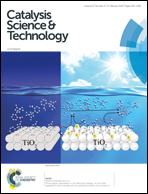Recent trends in organocatalyzed asymmetric reduction of prochiral ketones
Abstract
The asymmetric reduction of unsaturated carbonyl functionalities is one of the most important chemical transformations to generate optically active stereocenters. Optically active secondary alcohols are a class of compounds which displays significant importance as various intermediates, chiral building blocks and biologically active compounds. Various methods have been utilized for the synthesis of these secondary alcohols to achieve high activity and enantioselectivity for reduction reactions of prochiral ketones. Organocatalysis plays a pivotal role in the area of asymmetric synthesis. Recently, several types of organocatalysts have been investigated for asymmetric reduction of prochiral ketones to obtain chiral alcohols with excellent enantioselectivity. This review is focused on selected studies on the development of organocatalysts which are classified into six major categories: i) oxazaborolidine, ii) hydroxyamide, iii) BINOL, iv) ionic liquid, v) phosphoric acid and vi) thiourea-amine based catalysts for asymmetric reduction of prochiral ketones. Mechanistic studies performed in this area are also briefly summarised herein. This review specifically focuses on the most recent applications of organocatalysts used for reduction of ketones for the past seven years.



 Please wait while we load your content...
Please wait while we load your content...